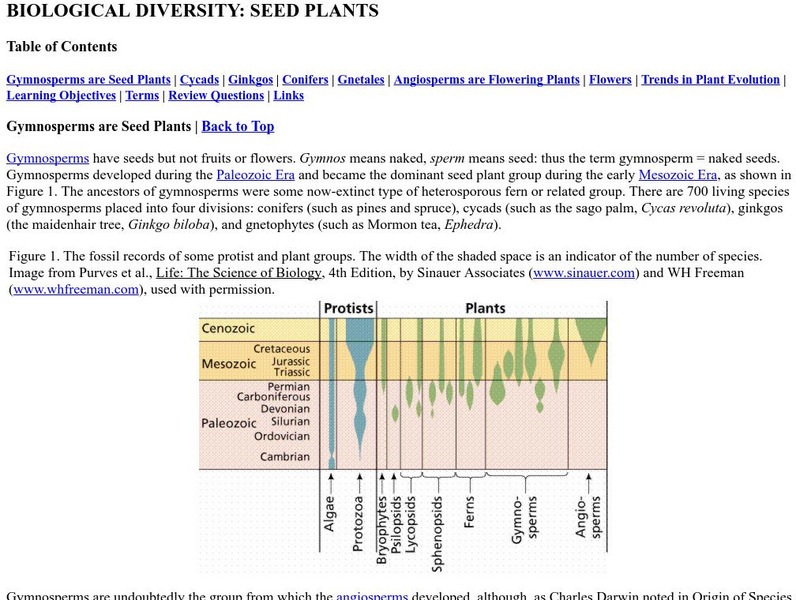Hi, what do you want to do?
Curated OER
Nuts About Peanuts
First graders explore peanuts. In this peanut lesson plan, 1st graders examine the parts of peanut plants and identify them. Students plant their own peanut plants and chart their growth.
Curated OER
Picture Word Book
Students create a book. In this vocabulary and word identification lesson, students make a book by gluing pictures on construction paper, then the teacher writes words in the book to label each picture.
Curated OER
Plant Responses
In this plant response worksheet, students will explore the different responses plants have to different stimuli, including light and gravity. Students will complete 7 multiple choice questions and 3 fill in the blank questions.
Curated OER
Plant Roots
Students discover the purpose of plant roots and how they move water through a vascular system. They conduct an experiment using colored water to observe the movement of water through the roots and stem of a plant in a controlled...
Curated OER
Stem Cuttings
Learners select the best non-flowering stems of plants and remove the leaves from the soon to be buried portion of the stem. They fill seedling flats with soil and insert the cuttings, label, and water.
Curated OER
Growing Tomatoes
Second graders investigate the growth of tomatoes. They plant grape tomatoes and observe them. They write in a journal and take digital pictures of their tomato plants. They create bar graphs to tally the progress of their plants and...
Cornell University
Beneficial Insects
A lot of people think of insects as pests. But actually, some insects are beneficial because they get rid of pests! After learning about beneficial insects, class members research given insects to find out if they are pests or predators.
Cornell University
Sun or Water? or Both?
Over the course of 10 days, young scientists observe their cups of seed and soil—one that gets sun and water and one that gets no sun and only water. Then they reflect on the results of the experiment to determine if their hypothesis was...
Curated OER
Earth's Heavenly Treasures: Hummingbirds
Young ornithologists watch an informative video and use the Internet to gather data about the life, size, habitat, and migration of hummingbirds. The interdisciplinary lesson includes activities that target art, science, math, and...
Curated OER
Integrating Art Into Other Content Areas
Here are some ideas to help add an art lesson to every math, science, social studies, or language arts unit.
Curated OER
Interior Design, Lesson 4
Young scholars choose furnishings and accessories based on color, line, pattern, texture, shape, and mood. They discuss how interiors are affected by furniture arrangements and traffic patterns and examine furniture and make a grouping...
Curated OER
Science Experiment Using Lima Beans
Fourth graders tie together elements about the world and their environment. Students incorporate styles of higher order thinking skills. Students measure skills of observations, conclusions, inferences and predictions.
Curated OER
George Washington Carver and Sharing
Students research George Washington Carver. In this science lesson, students discuss George Washington Carver's contribution to science. Students explain how peanut butter is produced.
Curated OER
Growing With Compost
Students discuss the positives and negatives of composting. They plant their own plant using composting material and record results. They create a poster for the classroom.
Curated OER
Biological Communities
Students identify consumers and producers in different communities. Students collect a variety of soil samples and record organisms found in the samples.
Biology Pages
Kimball's Biology Pages: Sexual Reproduction in Angiosperms (Flowering Plants)
This site, from retired Harvard professor John W. Kimball, provides a detailed but understandable explanation of sexual reproduction in flowering plants. Includes informative, well labelled illustrations.
Enchanted Learning
Enchanted Learning: Plants
Enchanted Learning provides information an illustrated plant dictionary as well as printouts, flower anatomy, and plant-related crafts.
Estrella Mountain Community College
Online Biology Book: Biological Diversity: Seed Plants
An in-depth reference explaining the role of seed plants in biological diversity. Photographs and labeled diagrams help learners with understanding.
Curated OER
Merriam Webster: Visual Dictionary Online: Flowers
Labeled diagram of common flowers in bloom.
University of Cambridge
University of Cambridge: Nrich: Seven Pots of Plants
On this one page website sharpen your logic skills while working on this flower pot labels mix up challenge. The solution is available to double check your solution.
University of Illinois
University of Illinois Extension: The Great Plant Escape: What Are the Parts of Plants?
Activity where the correct labels must be matched to the different parts of a flowering plant.
Science and Mathematics Initiative for Learning Enhancement (SMILE)
Smile: How Plants Spice Up Our Lives
Students take apart and label basic parts of a plant in this lesson plan. The students also use kitchen spices to determine which part of a plant was used for various flavorings.


























